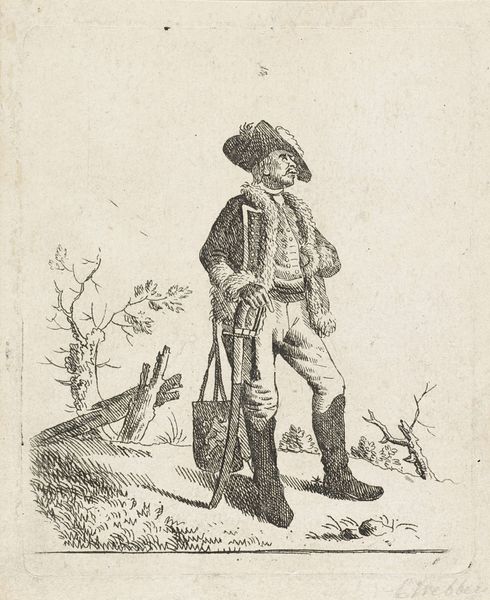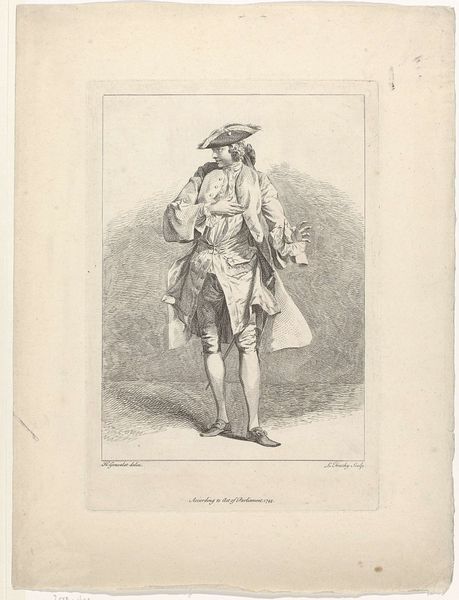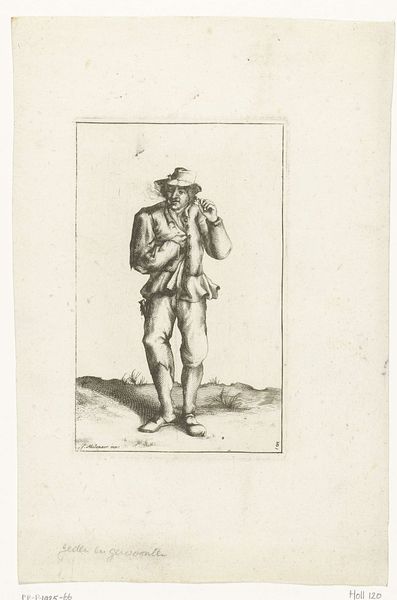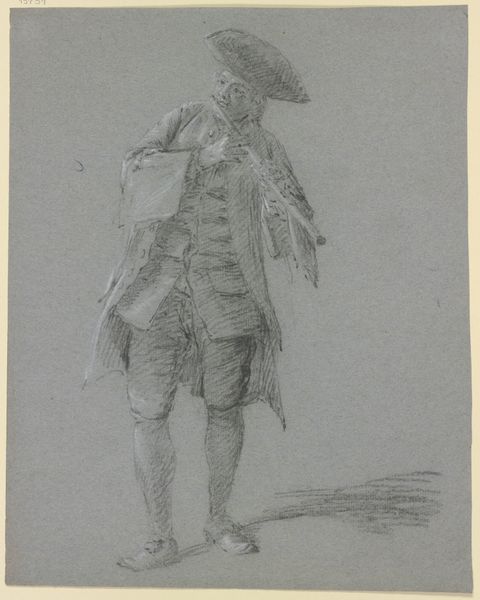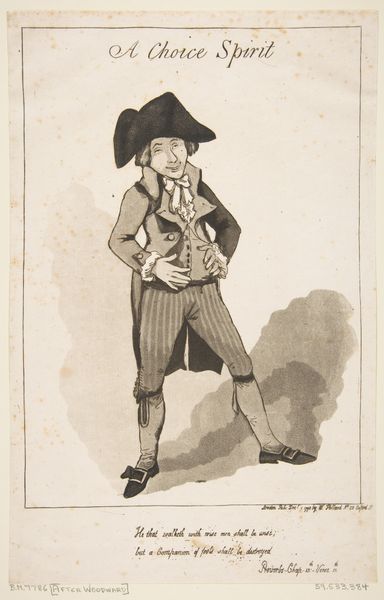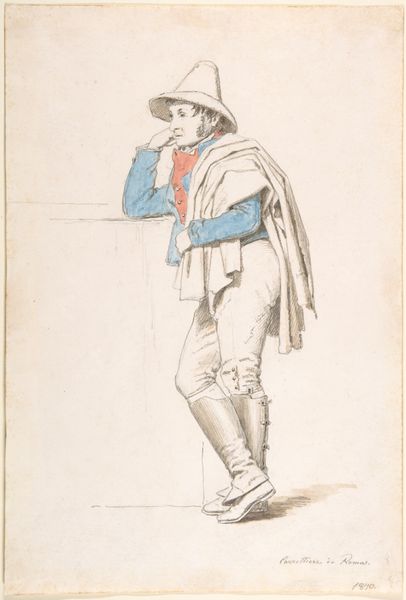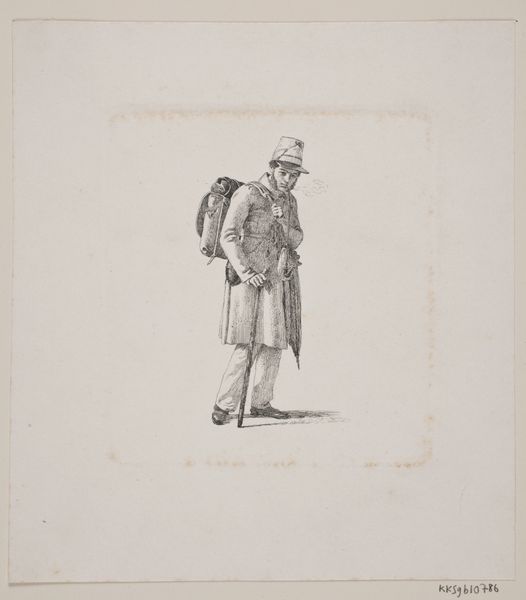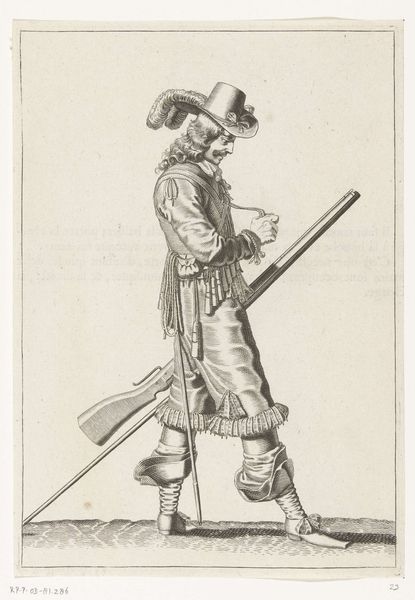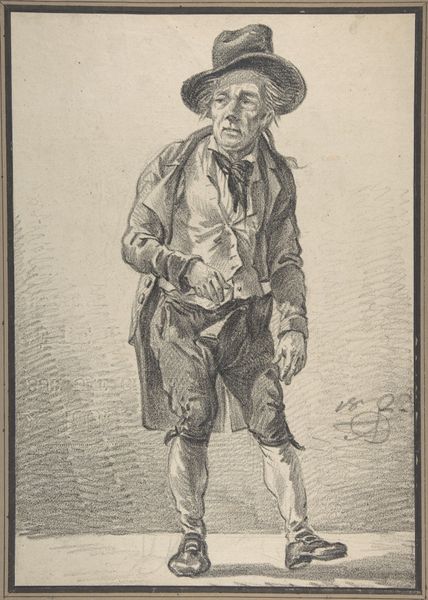
Dimensions: height 339 mm, width 249 mm
Copyright: Rijks Museum: Open Domain
Curator: This unassuming watercolor and pencil drawing, "Standing Hunter," comes to us from Anton Mauve, probably executed sometime between 1848 and 1888. It resides here at the Rijksmuseum. Editor: My first thought is... quiet observation. The color palette feels muted, almost melancholic. You can sense the weight of the gun on his shoulder and his overall sense of patient expectation. Curator: I know, it’s funny, isn’t it? Hunters, now. One can't help but read this through the lens of ecological concerns today, you know? We are all probably now, instinctually biased against anyone bearing firearms. Yet this figure here does feel... strangely neutral. Editor: Absolutely. I find myself wondering about the ethics of hunting then and now, about land ownership, and indigenous displacement, and how it relates to Dutch colonialism at the time, about our shifting relationship to nature. It’s interesting to note the time frame and consider that alongside the Dutch colonial influence that pervaded the world in those days. Curator: Well, contextually, genre paintings like this often depicted idealized scenes of rural life. There was probably then this intent to glorify country life – and the painting offers then also a glimpse into a changing society undergoing rapid industrialization, perhaps that’s why it’s rendered so delicately and the gaze feels sort of turned inward rather than a pure glorification of power and strength. Editor: That rings true. You feel that nostalgia for a simpler existence and can observe, here, perhaps an implicit commentary on class and the working class and the role hunting played as subsistence and privilege. Was hunting, as depicted in artworks such as this one, just a marker of freedom, self-reliance, and masculinity, or could it already signify, at the time, the beginning of unsustainable practices? Curator: I think what is haunting me is the subject's quiet, perhaps reluctant stance, not quite heroic, and somehow burdened by the duty. There is no hint of brutality or triumph in it; he appears instead thoughtful, and maybe, now, remorseful in retrospect, like he could sense things to come. Editor: I think Mauve managed to convey some real ambiguity. There is definitely plenty of rich, complicated history embedded in that single figure. Thanks for pointing this out. Curator: Absolutely. It leaves you questioning simple notions about man and nature, doesn’t it?
Comments
No comments
Be the first to comment and join the conversation on the ultimate creative platform.
